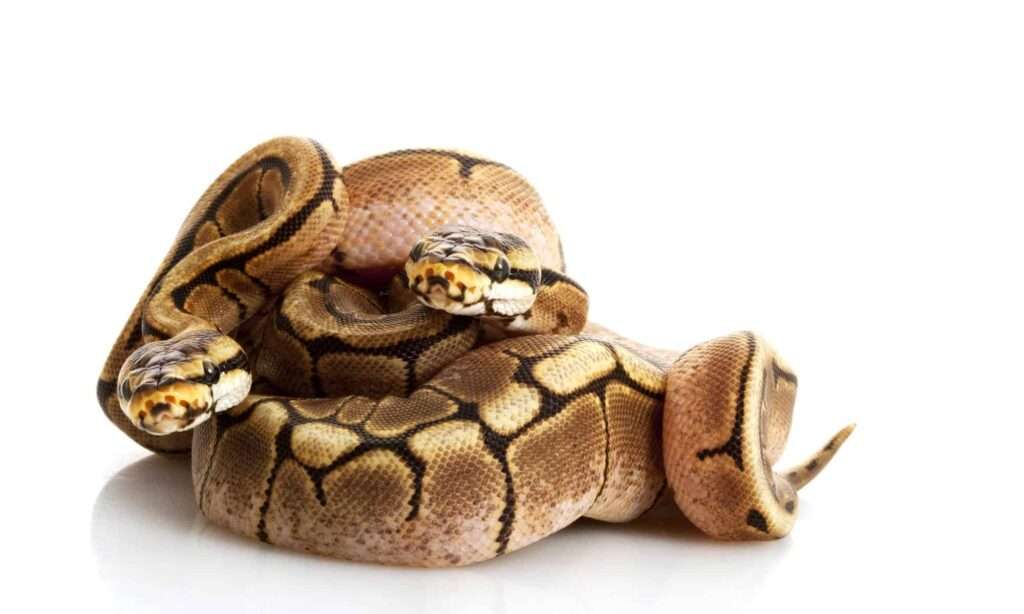
Description:
Scientific name: Python regius
Life span: Up to 50 years
The length of an adult spider ball python ranges from two to four and a half feet. Despite being ball pythons, these snakes are referred to as morphs. They are morphs because they don’t have the regular ball python scale patterns. These snakes experience neurological issues that manifest as head wobbling.

Native Region/Habitat
Western and central Africa is home to these ball python species. They inhabit scrublands, meadows, and woodlands.
Behavior:
This species prefers a calm setting with a regular routine and is timid.
The most active times of day for spider ball pythons are dawn, dusk, and night. They are calm, sociable snakes.
They only team up to procreate from September to December and prefer to live alone. Females stay with the eggs after mating to incubate them, but once the young hatch; they will depart to live on their own.
Care As a pet/In captivity:
Do not anticipate your python to instantly begin exploring its habitat when you first bring it home.
- Adults need to be kept inside in a 60-gallon enclosure made of PVC or plastic with opaque sides. Add numerous hides and covers to an existing glass tank to make it feel more safe.
- The enclosure where these snakes are kept as pets must maintain a temperature of about 80 degrees Fahrenheit. Additionally, for this snake to remain healthy, a humidity level of 50% to 60% is required.
- In the wild, ball pythons primarily pursue rodents and birds. In general, females kill more rodents whereas men, who are better climbers, tend to hunt more birds. Since they are real carnivores, pythons do not consume plants.
Table





